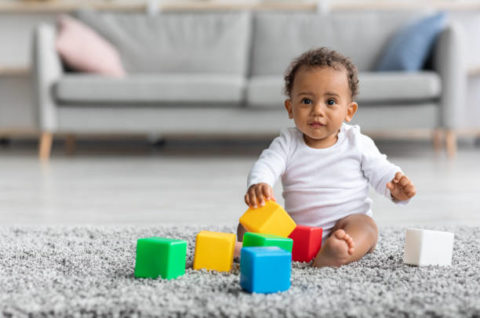
Taking Infants Seriously
July 27, 2023
Exploring Colors and Shapes Through Play
September 28, 2023Preschoolers are natural explorers with insatiable curiosity about the world around them. Engaging them in simple science experiments not only satiates their curiosity but also lays the foundation for a lifelong love of learning. These hands-on activities are designed to be both educational and enjoyable, fostering a sense of wonder and discovery in the youngest of minds.

1. Rainbow Magic:
Creating rainbows is a delight that captures the imagination of preschoolers. On a sunny day, all you need is a glass of water and a piece of white paper. Show your little scientist how sunlight passes through the water and refracts to create a rainbow on the paper. It’s a magical lesson in optics that leaves them fascinated.
2. Dancing Raisins:
Teach your preschooler about buoyancy and gas release through this fun experiment. Drop raisins into a clear glass of carbonated water and observe how they dance up and down as the carbon dioxide bubbles attach to them. It’s a playful introduction to the concept of gases and their effects on objects.
3. Magic Milk:
In this experiment, your child can explore the interaction between dish soap and milk. Pour milk into a shallow dish and add a few drops of different food colors. Dip a cotton swab in dish soap and touch it to the milk’s surface. Watch as the colors swirl and move, demonstrating the effects of surface tension and chemical reactions.
4. Baking Soda and Vinegar Reaction:
A classic and captivating experiment, the reaction between baking soda and vinegar introduces preschoolers to the world of chemical reactions. Let them pour baking soda into a container and then add vinegar. Witness the fizzing and bubbling as they learn about acids and bases.
5. Floating Egg:
Explore the concept of density with a simple floating egg experiment. Fill two glasses with water, one with plain tap water and the other with heavily salted water. Gently place an egg in each glass. Watch as the egg sinks in tap water but floats in saltwater due to the change in density. It’s a hands-on lesson that demonstrates how different substances can affect an object’s buoyancy.

6. Static Electricity Fun:
Preschoolers will be amazed by the magic of static electricity. Rub a balloon against a fabric surface and then hold it near small pieces of paper or their hair. Watch as the static electricity causes the objects to stick to the balloon. It’s a simple way to introduce the concept of electrical charges.
7. Melting Ice Magic:
Explore the concept of temperature with the melting ice experiment. Gather a few items made of different materials, such as plastic, metal, and paper. Place an ice cube on each material and observe which ice cube melts the fastest. This experiment helps preschoolers understand how different materials conduct heat differently.

These simple science experiments are not only captivating for preschoolers but also educational, laying the foundation for understanding scientific concepts in the years to come. Engaging in hands-on activities fosters a love of learning, encourages curiosity, and nurtures critical thinking skills from an early age. As parents and caregivers, we have the exciting opportunity to spark the flames of curiosity and inspire the next generation of scientists, one fun experiment at a time.
These and many such simple experiments that can be done at home, are found in the Learning Time A+ Program, designed specifically for children in the birth-to-preschool age group. Visit www.learningtime.co to find out more, and ask for a free presentation.




